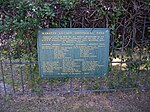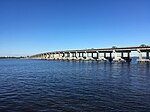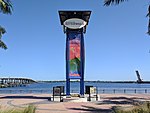Angola, Florida
Angola was a prosperous community: 232 of up to 750 maroons (escaped slaves): 71 that existed in Florida from 1812: 72 until Florida became a U.S. territory in 1821, at which point it was destroyed. The location was along the Manatee River in Bradenton, Florida, near Manatee Mineral Springs Park. The exact location is expansive, ranging from where the Braden River meets the Manatee River down to Sarasota Bay; archaeological research focuses on the Manatee Mineral Spring—a source of fresh water and later the location of the Village of Manatee two decades after the destruction of the maroon community. Archaeological evidence has been found and the archaeology report by Uzi Baram is on file with the Florida Division of Historical Resources of the Florida Department of State.
Excerpt from the Wikipedia article Angola, Florida (License: CC BY-SA 3.0, Authors).Angola, Florida
2nd Avenue East, Bradenton
Geographical coordinates (GPS) Address Nearby Places Show on map
Geographical coordinates (GPS)
| Latitude | Longitude |
|---|---|
| N 27.498 ° | E -82.549 ° |
Address
2nd Avenue East 1416
34208 Bradenton
Florida, United States
Open on Google Maps






